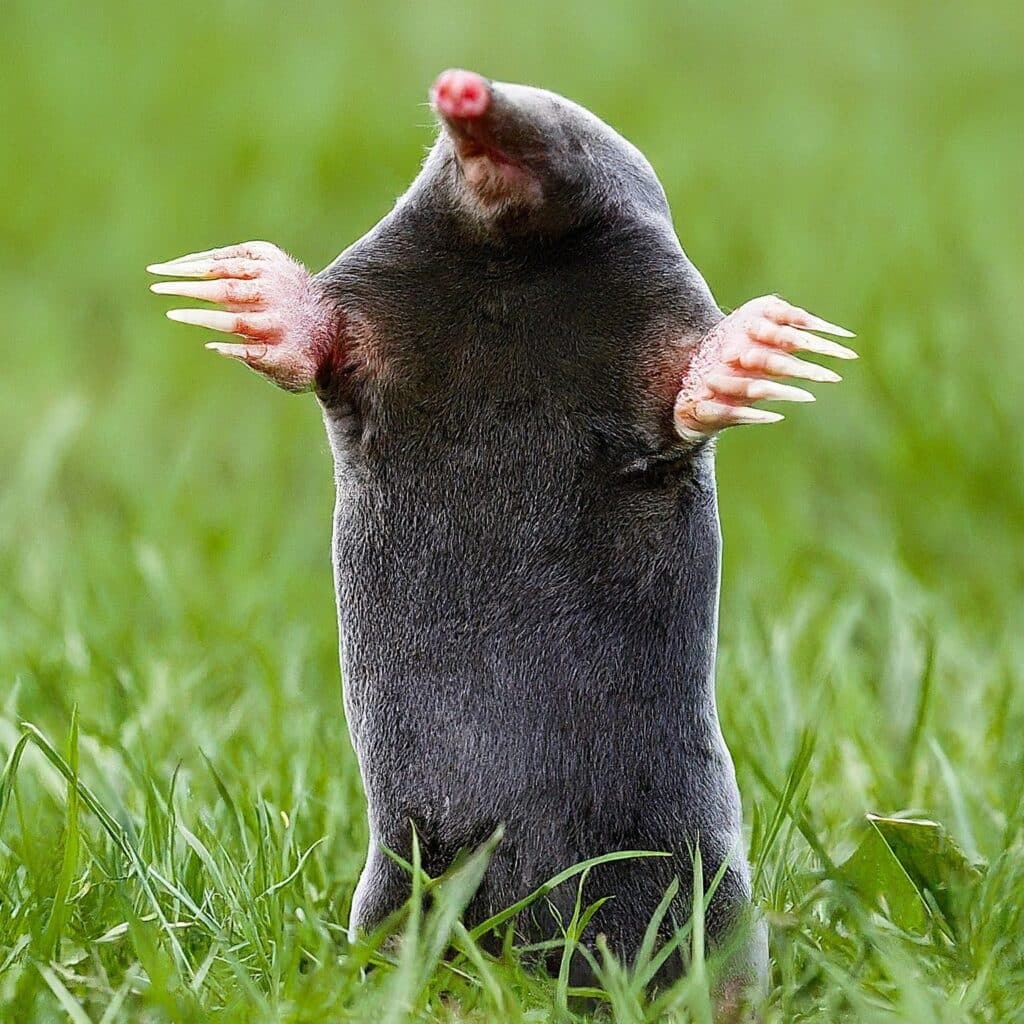Mole Madness: moles are mysterious, subterranean creatures, and far more common than you might think. With an estimated population of millions across the United States, these tiny tunnelers can be found in almost every state. While they’re active year-round, their most frenzied digging occurs during the spring and fall when they’re searching for food and preparing for winter. These nocturnal, blind creatures are primarily insectivores, munching on grubs, earthworms, and other underground delicacies.
Moles Moving Around My Property
If you’ve spotted those pesky mounds of dirt popping up in your lawn, chances are you’ve got moles. Other signs include visible tunnels, often appearing as raised lines in the grass, and small, circular holes about an inch in diameter. Oftentimes, you can even feel the tunnel collapse as you step on it. You might also notice damage to plants or lawns, as moles can disrupt root systems while digging resulting in plants not being as healthy as they should be or dead spots in your yard.
Mole Breeding Season
Moles typically breed once a year, with the breeding season occurring in early spring. After a gestation period of about a month, female moles give birth to a litter of 3-5 hairless, blind pups. These tiny creatures grow rapidly and are ready to venture out on their own within a few weeks.
What Role Moles Provide in the Ecosystem
While moles can be a nuisance to homeowners, they do play an important role in the ecosystem. By aerating the soil and consuming insects, they help to improve soil quality and control pest populations. It’s a delicate balance, though, as their beneficial activities can sometimes come at the expense of our lawns and gardens. Moles are drawn to grubs in the soil that feed on the roots of your desirable plants (like your lawn) and causing the plants to die or struggle. Moles can help with this, but often at the tradeoff of mole holes and tunnels.
How to Make Your Home/Property Less Inviting for Moles
If you’re tired of playing mole whack-a-mole in your yard, there are several steps you can take to deter these underground invaders.
- Reduce Insect Populations: Moles are primarily attracted to areas with abundant food sources, such as grubs. Applying nematodes or beneficial bacteria to your lawn can help control grub populations.
- Create Physical Barriers: While not foolproof, repellents and mole traps can be used to deter moles. There are also various home remedies people swear by, such as castor oil or ground pepper.
- Protect Your Plants: If moles are damaging your plants, consider using protective cages or barriers around vulnerable plants.
- Seal Entry Points: Moles can enter your property through small openings. Check for any gaps around foundations, pipes, or utility lines and seal them up.
Mole Digging Masters
Moles are engineering marvels when it comes to digging. Equipped with paddle-like forelimbs and sharp claws, they can push through soil with astonishing speed. Their tunnel systems are complex, often consisting of multiple levels and interconnected passages. A shallow tunnel network is used for hunting, while deeper tunnels serve as nesting and escape routes.
Fun Fact: Moles are incredible diggers and can push through soil 20 times as dense as water – that’s like a human swimming through concrete!
Living with Moles
While moles can be frustrating, it’s important to remember that they are a natural part of the ecosystem. By understanding their habits and taking steps to minimize their impact on your property, you can coexist peacefully with these underground neighbors.

Living with moles can be challenging, but with patience and the right strategies, you can enjoy a beautiful lawn while respecting the role these creatures play in the environment. And if these moles are driving you mad, give Prickly Pear a call. We have a variety of tools and technics at our disposal to help get your yard free from these invasive diggers.
